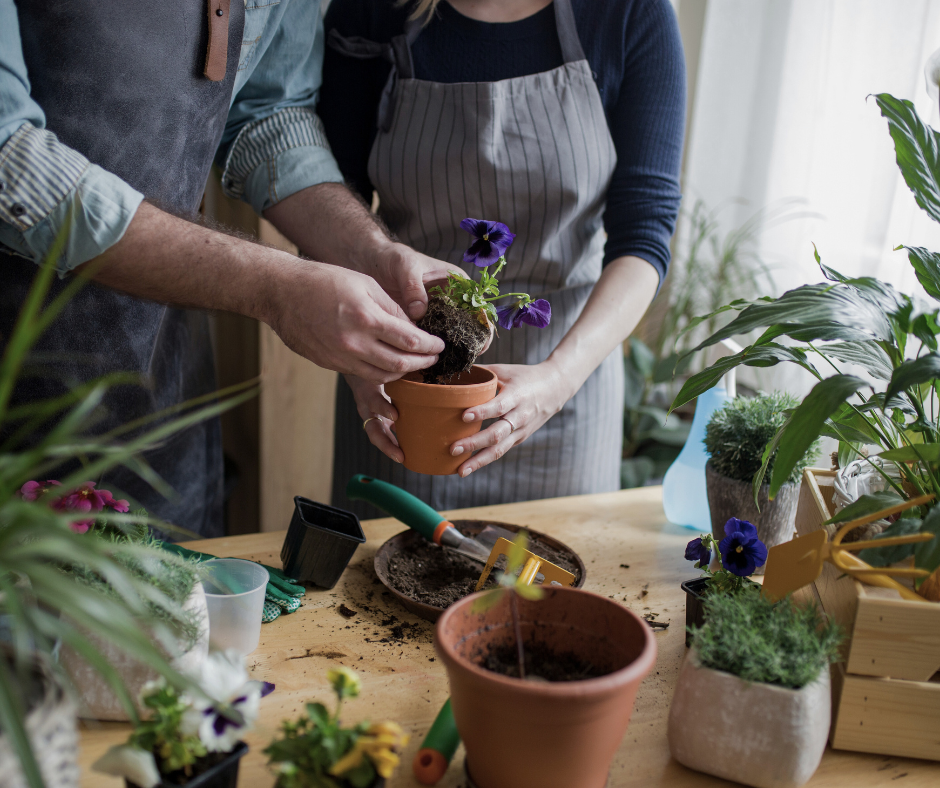
Tips for Connecting with New Neighbors
Summary
Reflection Questions
Journal Prompt
Just as good friends can bring happiness by reducing stress, comforting you, and removing loneliness, cultivating positive relationships with neighbors can contribute to a fulfilling and enriching home life. Beyond university campuses and places of work, it can be incredibly difficult to make new friends as an adult. If you work remotely or own your own business, making friends is that much harder. When approached properly, next-door neighbors can become life-long friends. In this article, we offer all our tips and tricks for making friends with neighbors. Here’s how to get to know your new neighbors without violating any boundaries.
Preparation and Mindset

The right mindset goes a long way in establishing natural, long-lasting relationships. The secret to making new friends is as simple as being open to it, and this holds true when building connections with neighbors. A positive and open-minded attitude becomes the key ingredient in this endeavor.
Approach introductions with genuine warmth, taking the opportunity to share a brief overview of yourself and, if applicable, your family. Consider cultural or regional norms, understanding how they might influence neighborly interactions.
Being mindful of these aspects not only ensures a welcoming atmosphere but also significantly enhances your chances of establishing meaningful connections with new neighbors. Embracing openness is the cornerstone to transforming casual encounters into lasting and fulfilling neighborly friendships.
First impressions are key to fostering neighbor friendships. Stay connected to your immediate neighbors, engage in local community activities, and participate in local events. These steps will help you get to know your neighbors and build a strong and supportive community.
Tips for Connecting with New Neighbors
The First Step: Making the First Move
Taking the initiative can go a long way when it comes to establishing connections with new neighbors. Make the effort to introduce yourself and break the ice with simple gestures like a friendly wave or warm greeting when you spot them outside. These initial interactions set the stage for future connections and create a comfortable atmosphere for getting to know your neighbors.
If you’re wondering how to make friends with neighbors, consider organizing events like a housewarming party or joining local community activities. Take advantage of neighborhood social media groups to connect with immediate neighbors and stay informed about community events. You could also explore opportunities like joining a local book club, attending the community pool, or participating in a community garden.
Meeting new neighbors can be easier if you find common ground or similar interests. Don’t hesitate to invite neighbors to join you in activities like exploring the local farmer’s market or attending events organized by the local fire department. The goal is to foster a sense of community and encourage the formation of new friendships within your new neighborhood.
Small Gestures Go a Long Way

Moving to a new place is always an exciting adventure, and one of the best ways to start it off on a positive note is by reaching out to your new neighbors. A warm welcome note can work wonders—it’s like the key to unlocking an instant connection. Imagine the joy of receiving a heartfelt greeting that not only radiates friendliness but also breaks the ice effortlessly. It sends the message that you’re approachable and genuinely interested in making your neighbors feel at home.
Consider adding a personal touch to your welcome note by including some local tips or offering to be a resource for any questions they might have. Sharing a bit of insider knowledge about the best coffee shop in the area or the Saturday morning farmer’s market can make your note even more special.
And who can resist the charm of baked goods? It’s a classic and delightful way to share a piece of kindness with your new neighbors. A homemade treat is like a sweet gesture saying, “We’re happy to have you here.” This simple act creates a positive association with the new neighborhood and can spark conversations that go beyond the typical introductions.
Don’t underestimate the power of offering assistance. Whether it’s helping carry in groceries or providing information about the area, these small acts of kindness go a long way in establishing a sense of community where neighbors look out for each other. Consider organizing a small gathering, like a dinner party or a block party, to give everyone a chance to mingle and build relationships.
Over time, these gestures contribute to a community where people genuinely care about each other’s well-being. So, go ahead, extend that invitation, and get to know your neighbors. Building connections with your immediate neighbors and other locals in your new community will not only enrich your personal style but also create a friendly and supportive neighborhood that feels like home.
Hosting a Get-Together
Considering organizing a casual get-together is a fantastic way to strengthen bonds with your neighbors and create a welcoming community. Whether it’s a laid-back coffee morning, a barbecue, or an open house, these events offer a relaxed setting for everyone to come together and enjoy each other’s company.
Choose a Casual Theme

To make it a low-pressure and inclusive affair, keep things simple by choosing a casual theme that encourages mingling. A coffee morning provides an excellent opportunity for neighbors to chat over a cup of their favorite brew, while choosing to invite people to a barbecue in a shared outdoor space or an open house at your place sets the stage for a warm and inviting atmosphere.
Extend Informal Invitations
To ensure everyone enjoys the event, begin by extending informal invitations—whether in person or through a friendly note—communicating that it’s a laid-back gathering and encouraging neighbors to drop by at their convenience. Plan inclusive activities that foster interaction without putting anyone on the spot, such as simple icebreakers or games that allow people to join in at their own pace.
Keep Refreshments Simple and Inclusive

Keep refreshments simple and varied, tailoring them to the occasion. For instance, a coffee morning might feature an assortment of pastries, while a barbecue could include easy-to-grab snacks, taking into account dietary preferences. Create a comfortable setting, whether through outdoor seating for a barbecue or a cozy living room for an open house, to establish an inviting ambiance.
Be a Responsive Hostess
Maintain a genuinely welcoming and approachable atmosphere as the host, taking the initiative to introduce people and facilitate connections. In this process of getting to know your neighbors and building relationships, consider inviting newly acquainted neighbors to join in.
Whether it’s a housewarming party or a simple invitation to spend time together, these exciting opportunities create a great excuse for friendly interactions. Utilize small talk as a great tool to initiate conversations, keeping in mind that not everyone may be comfortable with more direct approaches. Asking neighbors questions about their interests or sharing details about your new house can be a conversation starter.
For those with kids, organizing a play date in the front or new backyard can be a good exercise in bringing families together. Consider bringing a small gift when meeting new neighbors—it’s a thoughtful and obvious thing to do to express goodwill.
Participating in Community Activities

Encouraging participation in local community events, clubs, or neighborhood committees is a fantastic way to cultivate natural and organic interactions with neighbors. These activities serve as a communal space where residents come together, share common interests, and collaborate on shared goals.
By joining local events or clubs, individuals have the opportunity to engage with neighbors in a relaxed and informal setting. Whether it’s a community fair, book club, or neighborhood clean-up initiative, these gatherings provide a platform for people to connect over shared passions and concerns.
Belonging to neighborhood committees offers an additional avenue for interaction. Working towards common objectives, such as enhancing the neighborhood’s green spaces or organizing social events, fosters a sense of unity and shared purpose. This collaborative effort not only improves the community but also strengthens the bonds between neighbors.
Participating in these activities creates a natural environment for friendly relationships to develop organically. Shared experiences and joint efforts build a sense of camaraderie, making it easier for neighbors to connect beyond the specific event or committee. Over time, these interactions extend beyond the organized activities, leading to more meaningful and lasting connections within the community.
Being Considerate and Respectful
Recognizing the significance of being considerate is paramount in fostering positive relationships with neighbors. This extends to various aspects, including mindful management of noise levels and respecting property boundaries. Being considerate of your neighbors’ need for a peaceful environment creates a harmonious atmosphere that contributes to a sense of community.
Respecting privacy and boundaries is a fundamental aspect of neighborly etiquette. Being a good neighbor involves being mindful of personal spaces and understanding that everyone values their home as a sanctuary. By maintaining a thoughtful and considerate approach, you contribute to an environment where neighbors feel respected and valued.
In your efforts to make friends with neighbors, consider joining them for a casual walk around the neighborhood or apartment complex. A casual setting and eye contact can open up many exciting opportunities for conversations. Bringing goodies, perhaps a treat for their dog if they have one, is a thoughtful gesture that can create a positive impression.
Utilizing Social Media and Technology

In the modern era, leveraging social media groups or neighborhood apps emerges as a great way to connect with your community. These platforms provide a virtual space for sharing information, organizing events, and fostering a sense of belonging. Engaging in online discussions allows neighbors to stay informed about local matters and build a stronger community network.
However, it’s crucial to strike a balance between online and face-to-face interactions. While technology facilitates communication, it cannot replace the richness of personal connections. Caution should be exercised to ensure that virtual interactions complement, rather than replace, the genuine and meaningful relationships that are cultivated through in-person engagements. Balancing the use of social media with real-world interactions helps maintain the authenticity and depth of neighborly connections.
By being considerate and respectful in your interactions, both in-person and online, you contribute to the creation of a positive and harmonious community where each newly acquainted neighbor feels valued and connected.
In your quest to make friends with neighbors, consider joining online discussions as a good opportunity to talk and share experiences. While the virtual space opens up many exciting opportunities, it’s essential to remember that in-person interactions hold a unique charm. A casual setting, perhaps joining a neighbor for a walk, can create more opportunities to connect beyond the digital realm.
Building Long-Term Relationships

Maintaining and nurturing relationships with neighbors over time requires ongoing effort and a commitment to fostering a sense of community. Regular, casual interactions play a vital role in this process. Taking the time to greet neighbors, engaging in spontaneous conversations, or joining them for a walk are simple yet effective ways to strengthen connections.
In addition to day-to-day interactions, being there for your neighbors in times of need is crucial for building lasting relationships. Whether it’s offering a helping hand during a move, providing support during challenging times, or celebrating milestones together, these shared experiences contribute to the fabric of a close-knit community.
Dealing with Challenges
While the goal is to create a harmonious neighborhood, challenges may arise. It’s essential to address difficult situations or interact with neighbors who may not initially be receptive. Approach these situations with patience and understanding, seeking common ground and open communication.
Managing disagreements or misunderstandings amicably is key to preserving positive relationships. Clear communication, active listening, and a willingness to compromise can help navigate these challenges and maintain a sense of harmony within the community.
Final Thoughts on Making Friends with Neighbors

Building long-term relationships with neighbors involves consistent, casual interactions and being there in times of need. These connections contribute to the development of a supportive and friendly neighborhood community. While challenges may arise, addressing them with patience and open communication fosters an environment where positive relationships can thrive. Ultimately, a vibrant community is built on the foundation of shared experiences, mutual respect, and a commitment to creating a neighborhood where everyone feels valued and connected.
By Armela E.








